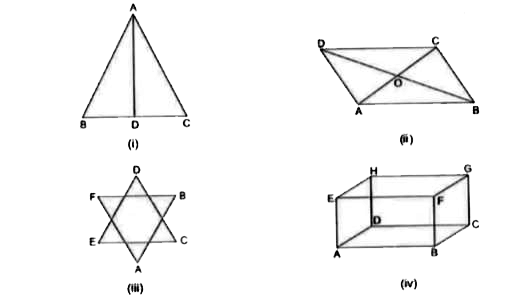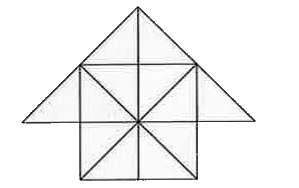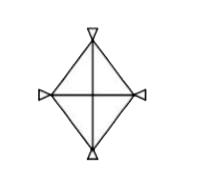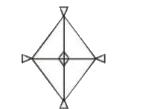Count the number of line segments drawn in each of the following figures and name them.

Video Solution
Text Solution
The correct Answer is:Six , ¯¯¯¯¯¯AB,¯¯¯¯¯¯AC,¯¯¯¯¯¯AD,¯¯¯¯¯¯BD,¯¯¯¯¯¯BC,¯¯¯¯¯¯DC
(ii)Ten , ¯¯¯¯¯¯AB,¯¯¯¯¯¯BC,¯¯¯¯¯¯CD,¯¯¯¯¯¯DA,¯¯¯¯¯¯OA,¯¯¯¯¯¯OC,¯¯¯¯¯¯OD,¯¯¯¯¯¯OB,¯¯¯¯¯¯AC,¯¯¯¯¯¯BD
(iii)Six , ¯¯¯¯¯¯AB,¯¯¯¯¯¯FA,¯¯¯¯¯¯FB,¯¯¯¯¯¯DE,¯¯¯¯¯¯DC,¯¯¯¯¯¯EC
(iv)Twelve, ¯¯¯¯¯¯AB,¯¯¯¯¯¯BC,¯¯¯¯¯¯AD,¯¯¯¯¯¯DC,¯¯¯¯¯¯FB,¯¯¯¯¯¯FG,¯¯¯¯¯¯GC,¯¯¯¯¯¯EF,¯¯¯¯¯¯EH,¯¯¯¯¯¯¯HG,¯¯¯¯¯¯EA,¯¯¯¯¯¯¯HD
|
Answer
Step by step video, text & image solution for Count the number of line segments drawn in each of the following figures and name them. by Maths experts to help you in doubts & scoring excellent marks in Class 6 exams.
Updated on:21/07/2023Topper's Solved these Questions
- LINE SEGMENT, RAY AND LINE BOOK - RS AGGARWALCHAPTER - LINE SEGMENT, RAY AND LINE EXERCISE - Exercise 11B
15 Videos
- LINE SEGMENT, RAY AND LINE BOOK - RS AGGARWALCHAPTER - LINE SEGMENT, RAY AND LINE EXERCISE - Exercise 11B
15 Videos
- INTEGERSBOOK - RS AGGARWALCHAPTER - INTEGERSEXERCISE - TEST PAPER - 4 (D)
1 Video
- LINEAR EQUATIONS IN ONE VARIABLE BOOK - RS AGGARWALCHAPTER - LINEAR EQUATIONS IN ONE VARIABLE EXERCISE - TEST PAPER (Write True T and False F )
5 Videos
Similar Questions
Knowledge Check
Count the number of triangles in the following figures.
Count the number of triangles and squares in the figure given below:
 A26 triangles, 5 squaresB28 triangles, 5 squaresC26 triangles, 6 squaresD28 triangles, 6 squares
A26 triangles, 5 squaresB28 triangles, 5 squaresC26 triangles, 6 squaresD28 triangles, 6 squaresCount the number of triangles in the figure.
 A11B13C10D12
A11B13C10D12Count the number of triangles in the figure.
 A28B24C26D20
A28B24C26D20
Name all the line segments in each of the following figures:

View SolutionIdentify and name of line segments and rays in each of the following figures :

View SolutionDraw the line (or lines) of symmetry of each of the following figures.

View SolutionHow many line segments are there in each of the following figures? Name all of them. Figure (ii) Figure (iii) Figure
View SolutionName the point and then the line segments in each of the following figures (Fig. 2.30):

View Solution

